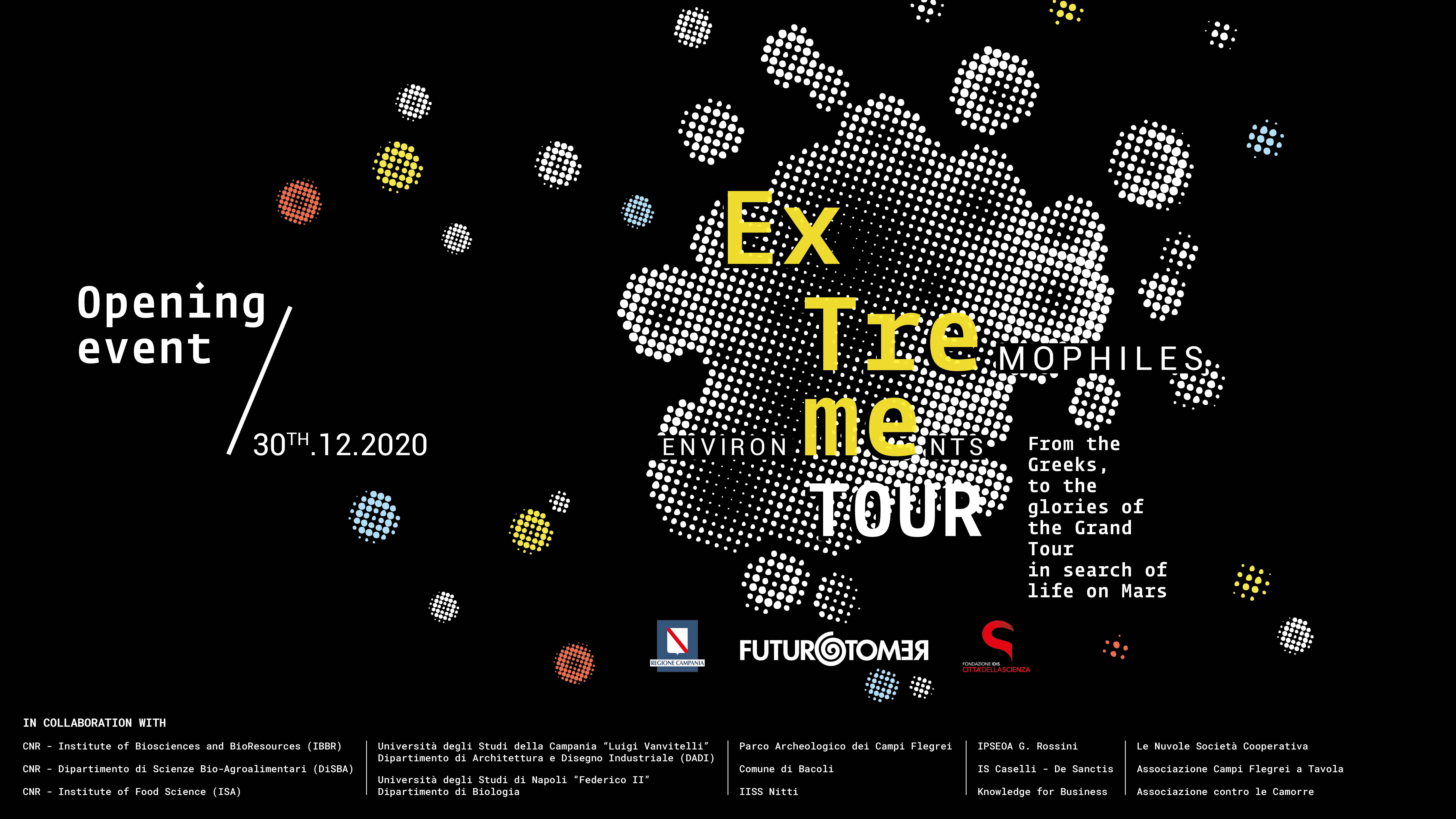Revealing the invisible and discovering the life that hides behind strange and unrecognized microorganisms, the extremophiles, which populate different territories at the most distant latitudes: this is the intent of the new online exhibition of Città della Scienza, created with the contribution of Campania Region , ‘Extreme tour, From the Greeks, to the glories of the Grand Tour in search of life on Mars’, the immersive installation mixing art and science, which will be inaugurated on Wednesday 30 December 2020 at 11 am.
Opening will be with institutional greetings of the President of Fondazione Idis-Città della Scienza Riccardo Villari, Councilor for Administrative Simplification and Tourism of the Campania Region Felice Casucci, Director of the Archaeological Park of Campi Flegre Fabio Pagano and Francesco Loreto, member of the Technical Scientific Committee of Fondazione Idis-Città della Scienza.

Alessandra Drioli, head of the Science Center of Città della Scienza, will moderate the following speakers: Francesco Talamo, Head of Communication, use and enhancement of the Archaeological Park of Campi Flegrei, Carla Giusti, Director of EXIT – Exhibition Team of Città della Scienza, Carla Langella, Professor of “Bio-innovation Design” and “Design for Scientific Visualization, coordinator of the Hybrid Design Lab, University of Campania” Luigi Vanvitelli “, Marco Moracci, Professor of Biochemistry, University of Naples Federico II, Anna Valenti, IBBR-CNR Researcher, Olga Mangoni, Professor of Ecology, University of Naples Federico II and Maria Cristina Staiano, ISA-CNR Researcher.
IL PERCORSO ESPOSITIVO
The exhibition leads to the discovery of the Phlegraean Fields through exceptional protagonists: extremophiles, extremely resilient microorganisms, discovered by scientists only in recent decades, which survive and proliferate in environmental conditions that are prohibitive for humans. Here the eighteenth-century Grand Tour is transformed into an “Extreme” Tour: starting from the research on extremophiles in the Phlegraean Fields realized by the CNR and the University of Naples Federico II, the installation shows the fascinating characteristics of these organisms, the places where they live and the richness of the territories that host them, marked by precious testimonies of the Greeks and Romans, in a way that combines history, art and myth with scientific research and technology.
The exhibition – dedicated to a new discovery of the Phlegraean Fields through the new lens of the microorganisms that inhabit them – is created with the contribution of the Campania Region and is developed by Città della Scienza in collaboration with IBBR-CNR, DiSBA-CNR, ISA- CNR, the University of Campania “Luigi Vanvitelli” – Department of Architecture and Industrial Design, University of Naples “Federico II” Department of Biology, the IPSEOA G. Rossini, the IISS Nitti, the IS Caselli -De Sanctis, the Archaeological Park of Campi Flegrei, the Municipality of Bacoli, Le Nuvole Cooperative Society, Knowledge for Business, the Campi Flegrei a Tavola association, the Association Against Camorra.
The main objective of the exhibition is to present to the public, through fascinating and interactive modules, the results of scientific research and its applications, highlighting the crucial role played by these extraordinary micro-organisms in the evolution of life.
The installation, which offers a new key to understanding the territory capable of making different knowledge and knowledge interact, presents in the first area a series of information data that highlight how life can be found anywhere, even in extreme environments
The passage of scale, from a human one to that of an extremophile organism, is instead the metaphor used to access the most immersive part of the installation: a floating space where real elements are combined with multisensory installations that immerse visitors in the three extreme environments treated , Campi Flegrei, Antarctica and Yellowstone Park, discovering the different layers, made of sounds, acidity, colors, smells, extreme temperatures, algae and of course extremophilic organisms, which constitute its distinctive features.
The integration between the individual elements of the exhibition – interactive data, video mapping, sounds and three-dimensional organisms – leads visitors to experience firsthand the experience of the scientist on the field who, thanks to immersion and of increasingly microscopic scales, he manages to discover the extraordinary nature of these organisms, including Saccharolobus solfataricus, the first native species identified in the Solfatara di Pozzuoli, and to experience the thrill of research in extreme contexts.
One of the most innovative elements of the exhibition is the multidisciplinary design team, which has seen a deep synergy between archaeologists, art historians, scientists, designers, communication experts, scientific dissemination experts in the common goal of proposing a physical / virtual ecosystem and immersive of extreme environments to allow viewers to fully immerse themselves in the context.




















